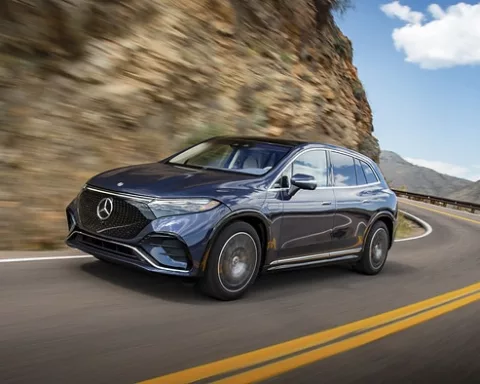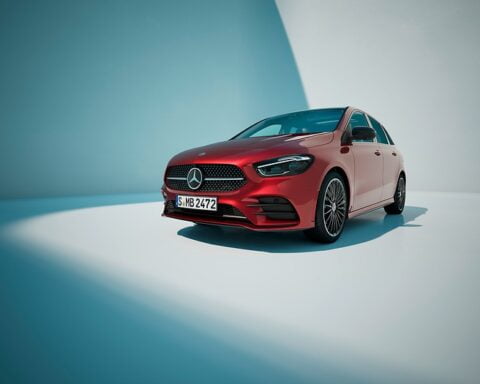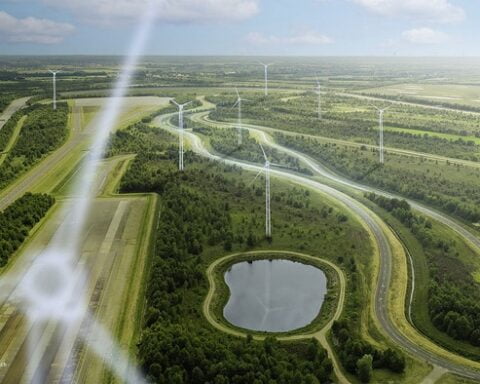Has been rolling off the assembly line for more than 25 years: the Mercedes-Benz Vito
Stuttgart. – The first van generation didn’t just mark the beginning of a new era for light commercial vehicles from the brand with the three-pointed star, but also saw the historically important factory in the Basque capital of Vitoria-Gasteiz enjoy a renaissance: with this fundamental modernisation, annual production capacity rose to 80,000 vehicles then. Thanks to the extension of the factory, a new logistics centre and a high level of automated manufacturing processes, one of the most modern European Mercedes-Benz sites was created.
“More than a quarter of a century ago, the site in Vitoria with its long-standing tradition has been inseparably linked with the Mercedes-Benz Vito. With each Vito model generation, Mercedes-Benz has consistently invested in manufacturing and has sought to modernise production processes. The result is one of the most efficient Mercedes-Benz vehicle factories which supplies top products in the medium-sized vans segment,” says Ingo Ettischer, Head of Mercedes-Benz Vans Operations.
The Mercedes-Benz Vitoria production plant has around 4,900 employees now. Located to the west of the city centre, the factory premises span an area of 642,295 m². Since the 2001 extension, the production buildings now cover a total area of 370,000 m², the equivalent of about 50 football pitches. The factory supplies almost all global markets. At the same time, the plant is one of the most important industrial centres in the Basque region. The plant has produced over two million vans since 1995.
The largest part of the production is occupied by the Vito, which was once again extensively facelifted in 2020. Highlights of the facelift are the locally emission-free eVito Tourer variant (electrical consumption, combined: 26.2 kWh/100 km; CO2 emissions, combined: 0 g/km)[1] with a high-torque electric motor and 421-kilometre range[2], [3] as well as the efficient and powerful four-cylinder OM 654 diesel engine family. New products and features in the field of infotainment and assistance systems as well as a number of design enhancements round off the new mid-size van. Besides the Vito, the V class and the eVito, since 2020 the EQV (electrical consumption, combined: 26.4-26.3 kWh/100 km; CO2 emissions, combined: 0 g/km)1, the first fully-electric premium MPV from Mercedes-Benz has been rolling off the assembly lines in Vitoria.
The Mercedes-Benz Vitoria production plant
The factory in Vitoria-Gasteiz was built in 1954 and began producing vehicles for the DKW brand in the subsequent year. Mercedes-Benz AG, as it was also called at the time, was closely linked with Auto Union in the years that followed, before acquiring full ownership of the production site in 1981. From 1988 to 1995, Mercedes-Benz produced the MB 100-180 van series at this historical plant. The model series was the direct predecessor to the Vito and its later siblings the Viano and the V-Class.
The start of production of the Vito mid-size van 25 years ago went hand-in-hand with a thorough modernisation of the Vitoria plant: as part of the restructuring process, production capacity was then increased to 80,000 units per year. Whilst the old MB-100 production facility was completely disassembled, Mercedes-Benz extended and modernised the assembly halls and set up a new logistics centre. Largely automated work processes in the paint shop, as much as 80 % automation in the body shop and many new assembly processes increased the efficiency of the production plant.
The largest jump in technology at the Vitoria works was intelligent body production for the Vito: the versatile platform was designed from the outset not only for the panel van, but also for the passenger van and people carrier variants, the latter of which was introduced at a later stage. In order to guarantee the high quality standards typical of Mercedes-Benz, an ultra-modern 3D measurement centre was also built. In line with this, individual bodies were removed from the production line at random and their geometry, accuracy of fit, and the gaps were measured electronically. With this constant monitoring, Mercedes-Benz was able to ensure consistent manufacturing quality at the same level as passenger cars already back in the 1990s.
In order to prepare staff for their new tasks, they were given thorough training on the new van generation, largely at the Sindelfingen plant. Plus, the restructuring of the site included the ergonomic design of workplaces in its specification: this helped to maintain employees’ health and increased the efficiency of the work processes.
The subsequent generations of the Vito not only brought about modifications to the production, but also saw further investment in the site – the last investment was made between 2014 and 2016. Above all, the modernisation focused on the flexibility of the production plant, which now enables an extremely variegated range of models to be realised and also allows for the integration of traditional and electric drive systems.
[1] Electrical consumption was determined on the basis of Directive 692/2008/EC. The electrical consumption depends on the vehicle configuration.
[2] Power consumption and range were determined on the basis of Directive 692/2008/EC. Power consumption and range depend on the vehicle configuration.
[3] The actual range is also dependent on the individual driving style, road and traffic conditions, the outside temperature, use of the air conditioning system/heating and may differ accordingly.






